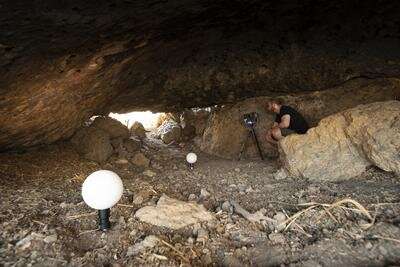HOME
Research shows how hallucinogens shaped prehistoric cave art

New research led by the University of Central Lancashire and including the University of Southampton's Archeology Department has revealed, for the first time, how prehistoric indigenous American people created rock art as part of the hallucinogenic experience.
As part of this research, published in Proceedings of the National Academy of Sciences, academics carried out excavations at a cave site in California after discovering a painting thought to represent the flowers of Datura wrightii, a plant historically used for its hallucinogenic properties as part of elaborate community ceremonies.
The most noted usage of Datura in Native California is as part of adolescent initiations, where the root of the plant was processed into a drink for young people in the community. Alongside the painting, researchers also discovered a number of chewed materials, which were almost all found to be a made from Datura.
This research reinforces the link between the ingestion of hallucinogens and the creation of rock art, showing that the art represented the plant itself rather than images from trance. This highlights the deep appreciation of hallucinogenic plants for native Californian people. Findings also suggest that the site was likely to be a communal space in which people would gather on a seasonal basis for hunting, gathering, food preparation, and eating. This shows that the art played a prominent role in the daily lives of all members of the local community.
News Source